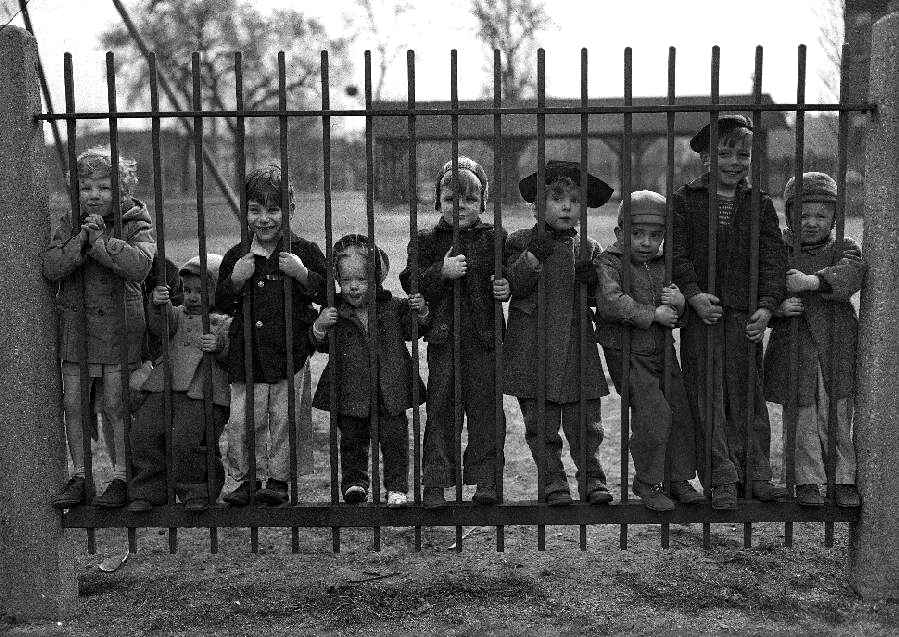
America during World War II: New Labor Pools--Women

Figure 1.--One obstacle to married women working was the children. As a result, factories of any size set up day carte facilities for the children. The newspaper caption here read, "These children spent a day at Chase park when their Daycare was closed due to safety violations, their mothers at work. They were eventually taken to another home. The look on these kids faces says they didn't mind a day of outdoor play." The photograph was dated March 23, 1945.
|
|
About a quarter of Anerican women (12.8 milliom) worked outside of the home. Many of these women were low-income workers, employed in poorly paid menial jonbs, and worked out of economic neccesity. Employment for women expanded significantly during the War. Many of the new jobs were in factories and paid good wages. At the peak of war productuion (July 1944), approximately 19 million women were employed in some aspect of war production. Significantly many of these women had not worked before the War and were employed in good paying jobs. This included both young women and married women. Many factories set up day care centers to accomodate women with small children. Women had worked in factories before, especially mills. During the War, women were hired for jobs that had previously only been done by men. Rosy the Riviter became an icon of the American home front. The number of women in the labor force is often exagerated. Less thn 3 million additional women entered the labor force during the War, important not massive. And the proprtion od women workers did not change massively because the work force itself expanded. A major development during the War was that many women changed jobs. Before the War, much of the female work force was engaged in a variety of menial jobs or as domestic servants. These were all low-paying jobs and unproductive in industrial terms. During the War many of these women found factory jobs in America's booming industries. This provided both critically needed manpower, but much higher paying jobs. Many factory managers were reluctant to hire women thinking that they could not hsnfle industrial jobs. They were surprised to find tht women coukd not only hndle mny jobs, but in many cases were better at them than men.
To accomodate women workers, many companies set up day care facilities for their children. There would be important social consequences of the involvement of women in the industrial economy during the War,
HBC

Navigate the Boys' Historical Clothing Web Site:
[Return to Main American new World War II labor pool page]
[Return to Main American World War II children page]
[Return to Main American 1940s page]
[Introduction]
[Activities]
[Biographies]
[Chronology]
[Clothing styles]
[Countries]
[Bibliographies]
[Contributions]
[FAQs]
[Glossaries]
[Images]
[Links]
[Registration]
[Tools]
[Boys' Clothing Home]
Created: 5:48 AM 9/6/2010
Last updated: 5:48 AM 9/6/2010



